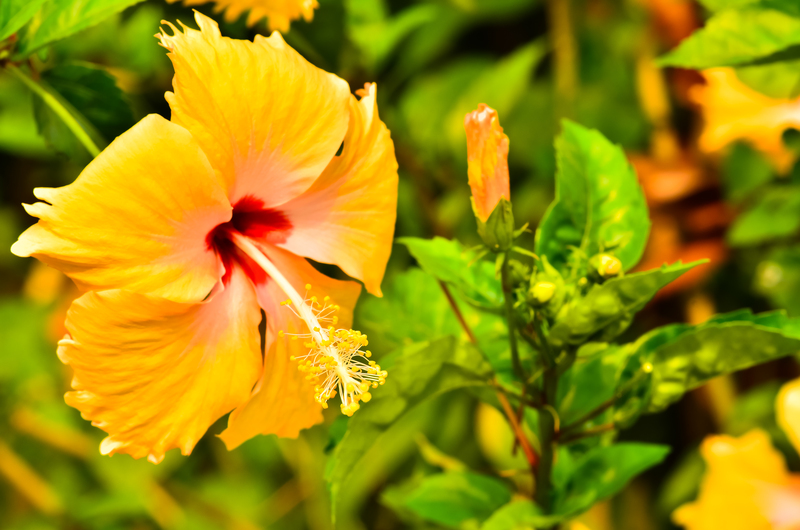Maintaining a Healthy Lawn: Tips for Dealing with Grubs and Other Invasive Pests
Posted on 09/09/2024
Having a lush, green lawn is the pride and joy of many homeowners. A well-maintained lawn not only adds to the aesthetic appeal of your property, but it also provides a safe haven for your family to enjoy outdoor activities. However, one of the biggest threats to a healthy lawn is invasive pests, particularly grubs. These pesky creatures can wreak havoc on your grass by feeding on its roots, causing patches of dead or dying grass. In this article, we will discuss effective tips for dealing with grubs and other invasive pests to maintain a healthy lawn.
Understanding Grubs and Other Invasive Pests
Before delving into ways to control and prevent infestations, it is essential to understand what grubs are and how they can damage your lawn. Grubs are the larvae of different types of beetles, including Japanese beetles, masked chafer beetles, and European chafers. These white, C-shaped creatures hatch from eggs laid by adult beetles in mid-to-late summer and feed on grass roots until fall when they burrow deeper into the soil to overwinter. As temperatures warm up in spring, they rise closer to the surface, continuing their destructive feeding habits until they pupate and emerge as adult beetles in late spring or early summer.
Apart from grubs, there are other invasive pests that can cause damage to your lawn. Some common ones include sod webworms, armyworms, cutworms, and billbugs. These pests have different life cycles and feeding habits but ultimately result in similar symptoms such as thinning or wilting of grass blades and brown patches on your lawn.

Symptoms of a Grub Infestation
Preventing extensive damage caused by grubs and other invasive pests requires early detection of an infestation. Here are some signs that indicate your lawn may be under attack:
1) Spongy or squishy areas - As grubs devour the roots of your grass, they leave behind patches of loose soil that feels soft or spongy underfoot.
2) Yellow or brown patches on grass - A grub infestation can lead to areas of yellow or brown grass, which may eventually die if left untreated.
3) Increased bird activity - Birds are natural predators of grubs and other pests. If you notice more birds than usual in your lawn, it could be a sign of a pest problem.
4) Signs of mole or skunk activity - Grubs are a favorite food source for moles and skunks, so if you see signs of these animals digging up your lawn, it could be an indication of an infestation.
Tips for Dealing with Grubs and Other Invasive Pests
Now that we know how grubs and other invasive pests can harm our lawns let's look at some tips for controlling and preventing infestations to maintain a healthy lawn:
1) Practice proper lawn maintenance - Keeping your lawn well-watered and fertilized helps promote healthy root growth, making it less susceptible to damage caused by grubs and other pests.
2) Monitor your lawn regularly - Inspect your lawn for signs of grub infestation at least once every two weeks. Early detection allows for prompt control measures to prevent extensive damage.
3) Apply beneficial nematodes - These microscopic worms are natural predators of grubs and can provide an effective control measure when applied to wet soil early in the morning or after heavy rain.
4) Use insecticidal treatments - There are various insecticides available in the market specifically designed to target grubs and other invasive pests. Follow label instructions carefully when applying these products.
5) Practice natural pest control methods - Encourage natural predators like birds, frogs, and spiders into your lawn by providing habitat options such as birdhouses, log piles, and water features. This can help keep pest populations under control.
6) Keep your lawn well-aerated - Aerate your lawn regularly to improve soil drainage and encourage deep root growth. This can also make it more challenging for grubs to survive as they prefer moist soil.
Takeaways
- Grubs and other invasive pests can cause significant damage to your lawn if left untreated.
- Preventative measures such as proper lawn maintenance, regular monitoring, and use of natural pest control methods can help reduce the risk of infestations.
- Beneficial nematodes and insecticidal treatments can provide effective control of grubs and other pests.
- Keeping a healthy lawn through proper maintenance is the best defense against invasive pests.

Pros and Cons
Pros:
- Early detection and timely treatment can prevent extensive damage caused by grubs and other invasive pests.
- Beneficial nematodes and natural pest control methods offer eco-friendly solutions for pest control.
- Maintaining a healthy lawn through proper maintenance provides the best long-term solution for preventing infestations.
Cons:
- Insecticidal treatments may harm beneficial insects, so caution should be taken when using them.
- Prevention methods may not be entirely effective in eliminating an existing infestation, requiring additional treatment options.
Conclusion
Maintaining a healthy lawn is crucial for any homeowner, but it takes effort and dedication. By following the tips mentioned above, you can effectively deal with grubs and other invasive pests, ensuring that your lawn remains green and vibrant. Regular monitoring, practicing proper lawn maintenance, and using natural pest control methods can help keep these pesky creatures at bay. Remember, prevention is always better than cure when it comes to maintaining a healthy lawn.












